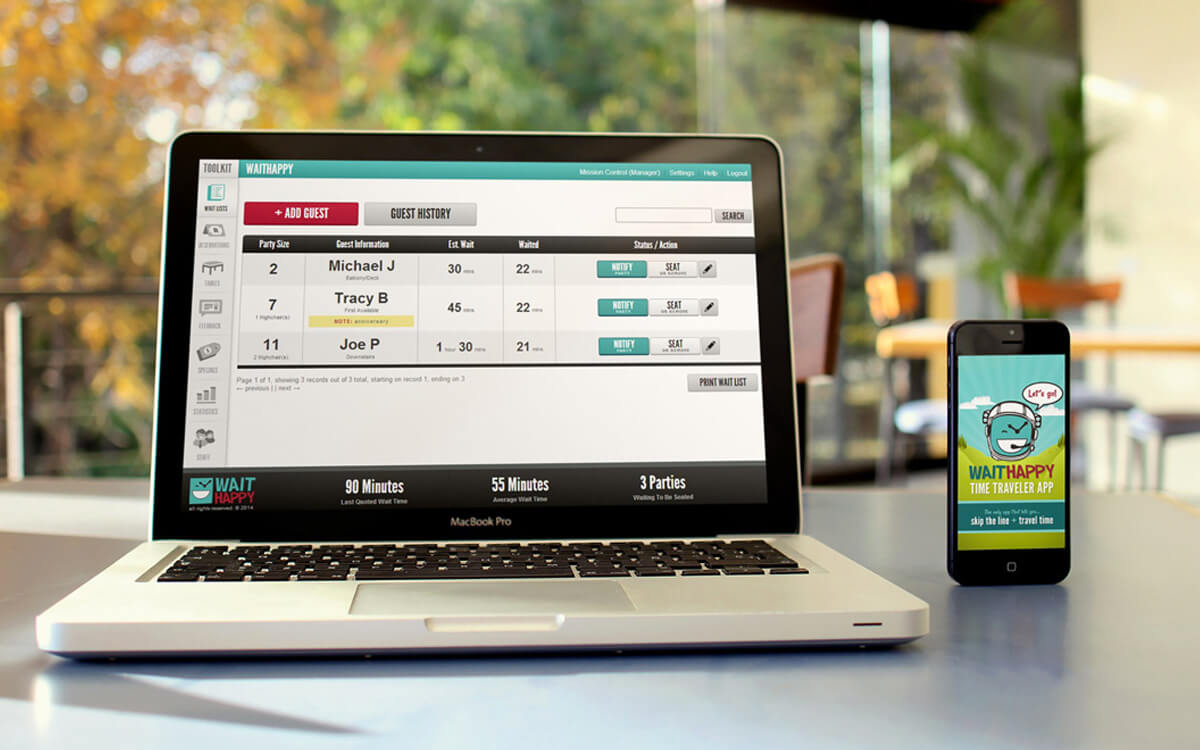Form Conversion Rates and How to Improve Them

The biggest obstacle to most people developing a sustainable framework for form conversion optimization is the fact that there are so many things you are supposed to test and numbers to track that it’s almost impossible to get started, let alone figure out which metrics to track. If you Google “conversion optimization” and start clicking around on the top blog posts and articles your head will start to spin.
The truth is, 95% of those articles are written by high-dollar software companies and conversion consultants. So, of course they want to drop terms like multivariate-testing, eye-tracking studies and dynamic form optimization. Don’t get me wrong, these are great solutions for large sites with a ton of traffic, however for the majority of websites out there, a little horse-sense and consistency can make a huge difference in improving your conversion rates and your bottom line.
The Basics of Conversion Rates
A conversion rate is simply the percentage of users who take a desired action on your website. In most instances a conversion is going to require your visitors to fill out an online form—they give you their information and you give them something they want. Usually, the conversion consists of three steps:
- A visitor arriving at your web site.
- The visitor arriving at your desired form page.
- The visitor completing the form.
These three-step interactions are tailor-made for the type of conversion improvement we are discussing today, whereas more complex conversions such as multi-stage ecommerce transactions where visitors put multiple items in a shopping cart before they check out are probably better handled through conversion funnel analysis or some other system that measures multiple interactions along the way.
Let’s Get Started
Above, I mentioned cutting through the clutter with a little common sense. So, instead of focusing on a lot of numbers and a lot of changes, we’ll focus on just a few important numbers while implementing fewer changes that will result in consistent improvement over time.
In order to adopt a system that requires consistent management, it needs to be easy to use. So, right now, we are going to concern ourselves with only two metrics:
- What percentage of visitors are getting to your pages that have web forms?
- What percentage of visitors are completing the form?
You can think of the first metric as “leading the horse to water” and the second as “making him drink.”
If you have multiple forms on your site, you’ll want to track these numbers for each form page and it’s corresponding thank you page.
Setting up your measurement program for success
A little bit of planning goes a long way in conversion optimization, so there are a few things to take into consideration before we get started.
Analytics software - In order to test and improve your conversion rates, you’ll need a web analytics package installed on your web site. Web analytics software measures all of the people who come to your site, what pages they go to and how they get to them. If you don’t have one yet, go to Google Analytics and sign up for this free and useful software.
Whoever manages your website should be able to implement the tracking code required to get the data that you need.
Your form pages - It is very helpful if all of the pages on your web site that have a web form are similarly named. Usually, ending the page name with “-form” is the easiest, (Ex: “contact-form”, “download-form.php”, “appointment-form.html”) this will make grouping them and reporting on them in your analytics software a lot easier. This is where we’ll get our “lead a horse to water” numbers.
Thank You pages - A “thank you” page is the page that a visitor will be directed to after they complete a form. Sometimes it will have just have a message describing the what happens next in the process or sometimes it will contain a link to a free resource or purchase details. Regardless of what the thank you page contains, each of your forms should have a corresponding “thank you” page that has its own url. I usually name these pages the same as its corresponding form page, only I replace “-form” with “-thanks” (Ex: “contact-thanks”, “download-thanks.php”, “appointment-thanks.html”). This also helps with tracking and is how we will determine our “make him drink” numbers.
When you keep a consistent naming structure, you can automate your reporting to just send you an email with all of the pertinent numbers.
Form conversion spreadsheet - This is where we can track our ongoing progress and keep track of what’s working. I usually use a Google Apps spreadsheet, but any spreadsheet will do. I give each form I want to measure it’s own tab and set up nine columns—form name, time period, sessions/visits, form views, thank you views, lead to water %, drinks %, form conversion % and notes. Google Apps users can make a copy of my spreadsheet here, by going under the File menu and selecting “Make a copy”.
Here is a brief description of each column in the spreadsheet:
- Form name - the form we are tracking on this tab, I usually use a common name that I can easily remember, but you can use the url or anything else you like.
- Time Period - the date range you are measuring, I usually do it monthly, but you can use any date range you like.
- Sessions/visits - the total number of sessions/visitors that came to your entire site over the selected time period. You can find it in Google Analytics by going to Audience > Overview it is the first number called "Sessions".
- Form views - the number of times people visited the individual form page over the reporting period. In Google Analytics, this number comes from the Behavior > Site Content > All Pages report. You can type "contact-form" in the search box (or whatever you name your form page). You will want to use the number under the third column of the report in Google Analytics called "Unique Pageviews".
- Thank you views - the number of times people visited the form’s thank you page over the reporting period. In Google Analytics, this number comes from the Behavior > Site Content > All Pages report. You can type "contact-thanks" in the search box (or whatever you name your form page). You will want to use the number under the third column of the report called "Unique Pageviews".
- Lead to water % - the percentage of visitors that makes it to the form page in question (form pageviews/session = lead to water%).
- Drinks % - the percentage of people who make it to the form page and go on to complete your form (thank you pageviews/form pageviews = drinks %).
- Form conversion - the percentage of overall site visitors that complete this form over the time period in question (thank you pageviews/session = form conversion %).
- Notes - this is where you can keep track of any changes you made to the form or how you drive people to the form page.
- Benchmark numbers - Go ahead and fill out the first row or rows of your spreadsheet with benchmark data to give yourself a starting place. Find all of your current forms and their corresponding thank you pages and record the data for the most recent complete month. This will give you a starting point and also uncover common problems that inhibit proper reporting, such as: one thank you page for multiple forms; un-tagged thank you pages that aren’t being measured by your analytics software; forms that don’t go to a separate thank you page when completed (some just put a thank you message on the same page so you never know how many people completed the form).
After you get your benchmark data in the spreadsheet, and address any of the issues that came up during this process, you are ready to improve your conversions.
A Tale of Two Numbers
Once you complete the proper set up of your forms, analytics software and measurement framework, most of the hard work is done. From here the focus is on how well we lead our horses to water, how often they actually drink, and how can we continually improve these numbers.
By understanding these two numbers for every one of your conversion forms, you can develop a plan of attack that will focus on the most pressing needs first. Here are three scenarios to look for in your spreadsheet and what they mean:
Scenario #1
Good percentage of visitors making it to the web form page, but not a lot of people completing the form. This usually means that something on the form is making users change their minds or maybe just confusing them.
The Strategy
Focus on optimizing your form first: Could you explain things more clearly? Could you make the form easier to complete? Can you make the visitor more confident about your company?
Scenario #2
Not a lot of people finding the form, but when they do find it, they tend to complete it. This is usually occurs when not enough people are learning about what you have to offer during their visit. However those people who stumble upon your form page usually complete it. The Strategy - focus on how you are promoting your form pages on your site. Do you have callouts on relevant pages that raise awareness? Are you talking about the benefits? Do your links to the page blend in with the design and not stand out?
Scenario #3
Not a lot of people coming to the page and not a lot filling out the form. This can occur when there is not a lot of promotion of the form on your site and something about the form is keeping visitors from completion.
The Strategy
This is basically dealer’s choice. We usually recommend evaluating the the overall benefit to the user before spending too much time trying to increase traffic to the page or the form completion rate. If it doesn’t seem useful to your audience when you take a hard look at it, sometimes it’s best to get rid of it. If you want to keep it, you can choose what side of the equation you want to work on first - horse leading or drinking - and track your results.
After you decide what changes you will try for the next reporting period (two weeks or a month is usually enough time to get a good sample), write the changes you are making in the “notes” field of your spreadsheet. It’s best to only implement one or two ideas at a time, so you can get a better idea of what does and does not improve your numbers.
Then, at the beginning of the next period, go ahead and enter your numbers from Google Analytics in the appropriate column of your spreadsheet and see the impact of your changes.
What ends up happening when you work within this measurement framework is that you start to discover what resonates with your users. You have a documented learning log of what you’ve tried, what has worked and what has not worked.
This will help you understand your target audiences better, which will help you launch better lead generation campaigns out of the box. Additionally, you have an instruction manual for your marketing department that will ensure consistency in the event of staff turnover or hiring a new staffer to manage conversion.
Tips For Leading More Horses to Water
When you’re looking to drive more traffic to your form pages, try the below tactics on any web pages, advertisements or press/articles intended to drive traffic to your individual conversion pages:
- Create a “Call-To-Action” - a call-to-action (CTA) is essentially a grouping of text and images designed to drive people to your conversion page. It can be as simple as a button, a small ad or an entire web page. (Examples)
- Test existing CTAs - If you are using a CTA that is not effectively driving traffic to your site, change it. You can change colors or spacing around it so it will stand out more or change the text to encourage more click throughs.
- Describe the benefits - Make sure your visitors know how they will benefit by clicking a link to your conversion page. Let them know what they will learn or how much they will save or how your resource will help them make more money.
- Reduce anxiety - highlight a free trial or money-back guarantee. If a visitor is concerned about the cost of signing up for something or whether you’ll sell their contact information, ease their fears to increase the likelihood that they will go to the conversion page.
- Create urgency - let them know that there is a limited time to act or that only the first 20 people who sign up will get the benefit.
Tips For Getting More Horses to Drink
When you are satisfied that you are effectively getting people to the proper page, but they are not completing the form, you can try to improve the completion ratio by testing the following:
- Make forms specific to the ask - make sure that you are not using a generic form for multiple purposes. Visitors have very little confidence that a generic form will result in outcome they are seeking. Make sure that your white paper or ebook download form lets the user know exactly what white paper or ebook they will get after filling out the form.
- Only ask for necessary information - there is a lot of research out there that shows one of the quickest ways to improve form completions is to ask for less information. If you want someone to sign up for a newsletter, just ask for their email address.
- Make it look nicer - forms with higher-end designs are more trustworthy and convert better. Increase space around the form fields, make sure your styles and colors match the web site styles, use high-contrast and designed buttons instead of generic submit buttons.
- Smart captcha or no captcha - captcha is the odd combination of distorted words and numbers that some sites make you type in on their forms to prove you are a real person and cut down on spam. Automated form spam is a problem, but captcha is not the solution if you want to improve your conversion rates. Smart captcha is similar, but it only presents captcha field if there is a high likelihood of automated spamming, which rules out the majority of actual human users. Also, no captcha is better for conversion than dumb captcha.
- Keep your form in one column - if your form is currently in multiple columns, try putting everything in one column instead. Eye-tracking studies have shown that people have more trouble completing multi-column forms than single column.
- Don’t use generic “submit” text - try to use text on the submit button that explains what comes next. Instead of submit, try “Download your free report” or “Start Your Free Trial”, etc.
Consistency is Key
Like most areas of online marketing, it’s more effective to do something simple and consistently than to do nothing or a one-time marketing extravaganza blow out. Hopefully this common-sense framework for tracking your conversion data and testing over time is simple enough for anyone on your staff who has a basic understanding of Google Analytics to maintain and manage.
You will be amazed at how much you can continuously improve your conversion rates by making a few well thought out changes and tracking them over time.
Latest Articles

Four Tips For Hiring a Good SEO Firm for Your Business
In today's SEO climate, where Google penalties can result in all of your web pages getting removed from search results, hiring the wrong SEO company can have disastrous implications on your ability to conduct business.
Continue reading
Why Going Viral is a Weak Goal (And Tips to Go Shareable)
Do you remember Zack Danger Brown's potato salad Kickstarter? I recently received a message from Kickstarter asking me to either change or confirm my address so that I could receive my reward (a photograph of Zack making the potato salad) for pledging $2.00 to the campaign. In case you forgot (I did), Zack's potato salad Kickstarter went viral this past July. What started out as a joke raised over $55,000 in just 30 days.
Continue reading